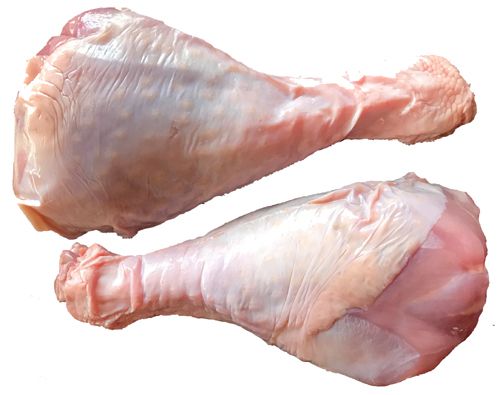Meat Stuffing
"If you want to improve the nutritional aspects of your annual Holiday feast, then replace the breaded dressing with grass-fed meat dressing. Many years ago large birds (usually wild birds or pasture raised birds) were always stuffed with meat. So let's revive an old tradition and restore the positive nutritional aspects that were always in the Thanksgiving day feast of yore." (To learn why a grass-fed meat dressing is more nutritional, click on: The Atomic Bomb of the American Food System.)
Ingredients:
4 lbs. Grass-Fed Ground Beef or Bison or Beef Breakfast Sausage
2 lbs. Omega-3 Pork or Omega-3 Chicken Sausage or Ground Meat
3 Omega-3 eggs
One whole onion, chopped
2 c celery, chopped
1/2 c shredded grass-fed aged cheddar cheese (or Parmasean)
1 tsp. ea salt
1/4 tsp. ground black pepper
2 tsp. rubbed sage
1/2 tsp. thyme
Giblets: cooked, cooled and pieces of meat removed from bones (optional)
In an appropriately sized pot, mix all ingredients and seasonings (according to your taste preferences). Cook until brown and onions and celery are soft. Remove from heat. Pour off some of the liquid if there seems to be too much. We really do not want to drain off too much of the grass-fed fat because it is actually good for you! Mix well. Stuff turkey and bake.
Heritage turkeys are the same breeds of birds that were popular between 1850 and 1950. They are descendants of old original and traditional breeds that were universally used for the traditional holiday feast. They are the same birds you'll will find in the American Book of Standards. It wasn't until the development of the large breasted bird of today that the Heritage turkeys declined in popularity. All turkeys source to the same origins and if fed the same, both heritage and modern whites taste the same.
Heritage birds have longer legs and are thinner breasted than the American White. But when free ranged they both have more flavorful dark and white meat than conventional grain-fed turkeys. This means the flavor is already in our turkeys so our job is to bring that flavor out, not hide it or destroy it. The trick is slower cooking at 325 degrees and keeping the bird well covered until the last thirty minutes. You know it's done when the meat separates from the bone and juices run clear. Remember to use your thermometer. Insert it into the center of the inner thigh muscle, not touching the bone, and cook to an internal temperature of 165 degrees. In some cases the turkeys come with a pop up thermometer which is handier. Season lightly and cook it slow and covered. That's part of the great taste. Cook about 15 minutes per pound for a 20-pound turkey and about 20 minutes per pound for a 8-pound turkey.
This recipe may stuff a 12-pound turkey. So use your best judgment on your quantities and use the spices according to your taste preferences. If you make too much dressing, it can be cooked up and served separately.



